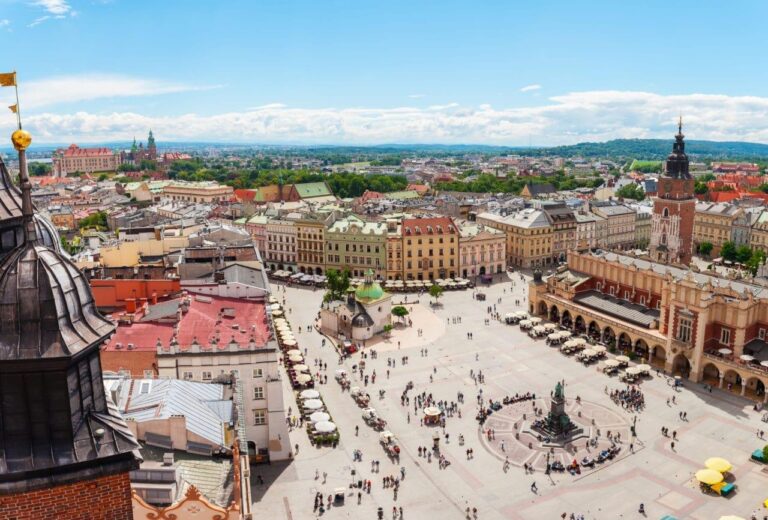Poland has announced plans to reinstate border controls with Germany and Lithuania in response to increasing migration pressures, authorities confirmed on Monday. The move comes amid growing concerns over irregular crossings and aims to enhance national security and manage migration flows more effectively. This development marks a significant shift in Poland’s border policy within the European Union’s internal Schengen area, raising questions about regional cooperation and the future of free movement in the region.
Poland Implements Border Controls with Germany and Lithuania to Curb Migration Flow
In a decisive move aimed at managing the influx of migrants, Polish authorities have announced the introduction of tighter border controls at key crossings with Germany and Lithuania. The measure seeks to strengthen border security through enhanced identity checks and increased patrols, an effort to stem the flow of unauthorized entries. Officials emphasize that this temporary arrangement is a proactive response to rising regional migration pressures and intends to preserve public safety and order.
Key features of the new border control measures include:
- Implementation of systematic passport and visa inspections
- Deployment of advanced surveillance technology and additional border staff
- Coordination with German and Lithuanian border agencies for seamless enforcement
- Provision of clear information and guidance for lawful travelers
| Border Crossing | Expected Impact | Additional Measures |
|---|---|---|
| Olszyna (Germany) | Reduced unauthorized crossings | Increased camera monitoring |
| Ogrodniki (Lithuania) | Enhanced document verification | Joint patrols with Lithuanian officers |
Analysis of Migration Trends Prompting Poland’s Security Measures
Recent migration trends across Eastern Europe have significantly influenced Poland’s decision to bolster its border controls with Germany and Lithuania. An increasing influx of migrants, driven by ongoing conflicts and economic instability in neighboring regions, has put unprecedented pressure on Poland’s immigration system. Key factors prompting these security measures include:
- Sharp rise in irregular border crossings: The number of attempts to cross into Poland without authorization has surged by nearly 40% in the past year, raising concerns about unregulated entries.
- Geopolitical tensions: Instability in adjacent countries has led to unpredictable migration flows, complicating border management strategies.
- Smuggling networks: Enhanced activity from organized groups exploiting the chaos at the borders intensifies security challenges.
These dynamics have translated into tangible operational changes aimed at enhancing national security. The government’s approach combines enhanced physical barriers, increased patrols, and sophisticated surveillance technologies. A comparative snapshot of border activity over the last two years illustrates the growing urgency:
| Year | Unauthorized Crossings | Border Patrol Deployments |
|---|---|---|
| 2022 | 15,000 | 1,500 |
| 2023 | 21,000 | 2,300 |
This increase underscores the need for comprehensive border control solutions that can adapt to evolving migration patterns, balancing humanitarian commitments with national security imperatives.
Expert Recommendations for Balancing Border Security and Humanitarian Concerns
Balancing security measures with humanitarian responsibilities remains a complex challenge along Poland’s borders with Germany and Lithuania. Experts emphasize the need for policies that not only address illegal crossings but also ensure the dignity and safety of migrants. Enhanced surveillance technologies combined with increased support for border patrol officers can improve enforcement efficiency. Meanwhile, human rights organizations urge the implementation of rapid asylum processing centers to prevent prolonged detention and reduce the risk of exploitation.
Several leading analysts propose integrated frameworks that incorporate both law enforcement and humanitarian agencies. This approach involves:
- Setting up multidisciplinary task forces for swift decision-making
- Providing legal assistance and psychological support to vulnerable groups
- Improving cross-border communication to manage migrant flows collaboratively
| Recommendation | Expected Outcome |
|---|---|
| Use of biometric screening | Enhance identity verification and reduce fraud |
| Establishment of quick asylum processing units | Minimize waiting times and improve migrant welfare |
| Joint border task forces | Strengthen coordination and resource sharing |
The Way Forward
As Poland moves forward with the reintroduction of border controls with Germany and Lithuania, authorities emphasize the measure as a necessary response to escalating migration pressures. The development underscores ongoing challenges within the region concerning cross-border movement and security. Observers will be closely monitoring how these controls impact both bilateral relations and the broader dynamics of migration within the European Union.



